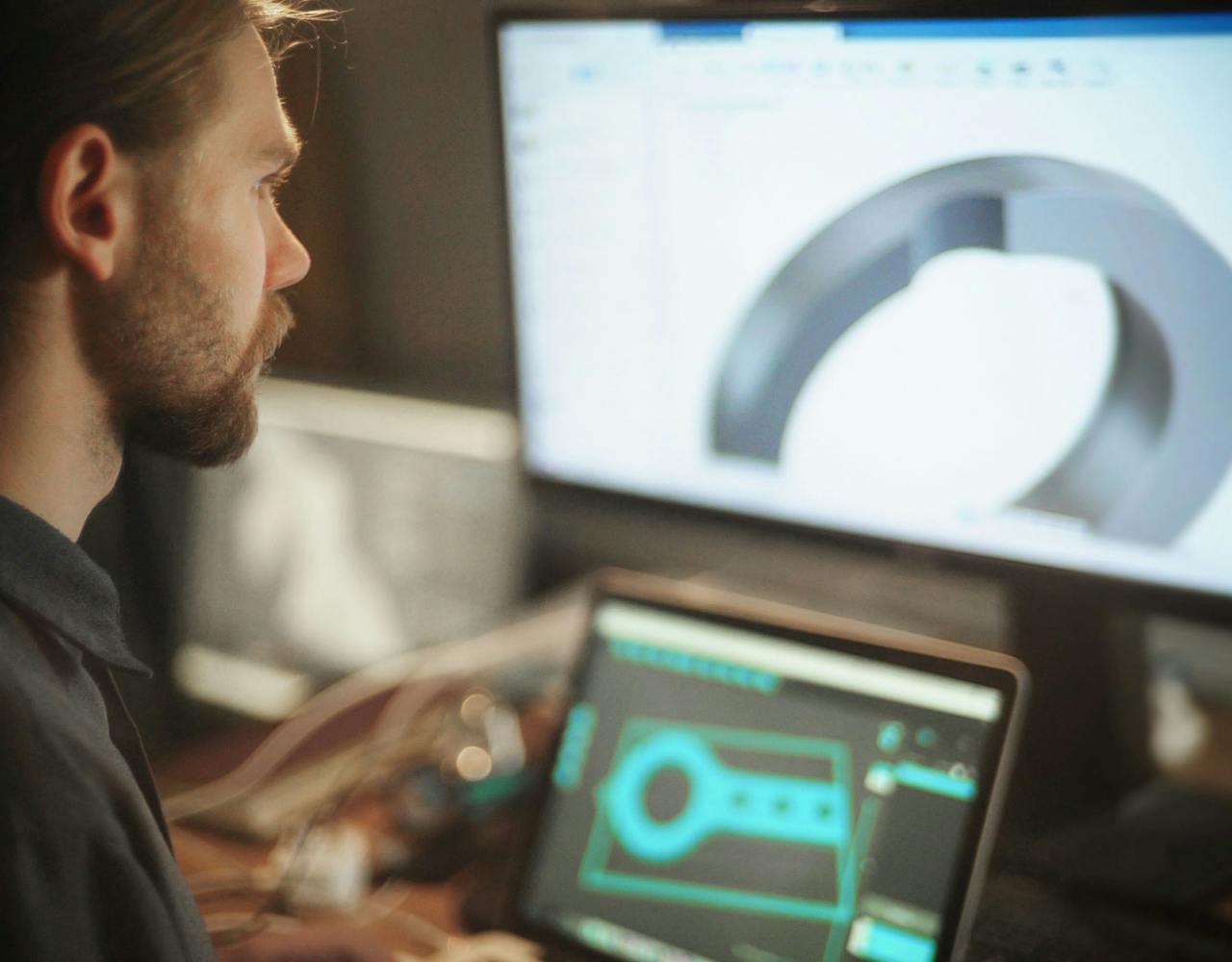The best version of Creo so far!
It’s alive! A game changer… that’s Creo 9. Improvements in productivity and user-friendliness make the latest Creo version ideal for delivering your very best designs. Feedback from users drove our updates. CAD models are now managed, adjusted and understood more smoothly than ever before.
The updated toolbox is also more extensive. Creo 9 is the best of breed today for ergonomics, Model-Based Definition, simulation, generative design or additive/subtractive manufacturing. It’s ideal.
User-friendly and productive
The Sketcher, multibody design, Freestyle and many other features were all updated. Working in a more streamlined fashion is a cinch in this ninth version of Creo. Model tree management not only seems a lot simpler… it just is. Creo was built for speed. And still is… Creo 9 continues forth.
- Divide up surfaces, create new regions and place isolated constraints on a specific location on the model. It provides more control over Product Manufacturing Information (PMI) and makes new workflows possible for Model-Based Definition, geometry creation and assigning appearance.
- In the Model Tree, you will find a new quilt tree, new design items and a toolbar to help clarify design intent. You also get a better understanding of how geometry is built incrementally.
- For Sketchers, we improved project assignments and enriched inspection tools.
- With simple and powerful Freestyle brushes, you sculpt improved organic geometric shapes and retain control over the definition and connection of curves.
Model-Based Definition and detailing
Creo 9 gives you lots of new powerful Model-Based Definition tools. Users further down in the development and production process now get more and more accurate information via the CAD model. Detailing a model also becomes easier with new items, such as welding symbols.
- Intuitive workflows for creating, placing and editing shape and place tolerances.
- On-screen transformation of surface symbols using modern draggers.
- Surface markings comply with the latest ASME and ISO standards with information for downstream users.
- Modernised shading tools to identify components, bodies or areas more easily in drawings.
- A comprehensive set of symbol modifiers in Geometric Dimensioning & Tolerance
- (GD&T) Advisor support details and improved productivity when working with annotations.
- Save time and enjoy simpler annotation by creating missing dimensions on-demand within GD&T via a ‘Create Selected’ tab in the dashboard. This option is available for simple holes, shafts, slots, plates and slotted holes.

Ergonomic design
Creo 9 takes into account the user’s range of motion, field of vision and uniqueness to be factored in the end result of your design. This produces safer and more efficient products for customers.
- Create your own dummies and add customer-specific attributes. Substitute dummies or save your own customised version as a single embedded assembly. ‘3D dragger’ control enables inverse kinematics. We also improved the manipulation of dummies and the handling of constraints.
- The innovative Visual Field feature shows the impact of design choices on users’ field of vision. Select objects that obstruct vision and see the resulting field of view. This ensures you can easily and quickly understand this aspect of your design.
Improved simulation and generative design
Improve products using custom simulation and generative design tools. Specifically, you use new powerful options to do so easily and smoothly.
- Creo Simulation Live introduces multiphysics capabilities for simultaneous, structural and thermal analysis. The option to include gyroids and grid features in fluid studies is present.
- With Creo Ansys Simulation, a high fidelity tool, you automatically create mid-plane geometry for scale nets, apply loads to create a mortise and tenon joint and simulate unlimited structures.
- You can use Creo Flow Analysis to run multiple computational fluid dynamics projects with more than one model, enjoy more robust meshing and support for grid geometry, and benefit from integration with Creo Behavioral Modelling extension for optimisation and sensitivity studies.
- One of the improvements in generative design is the option to design products with a specified safety factor. You can also perform modal optimisation to reach the desired frequency response of the specified material.

Additive and subtractive manufacturing
Creo 9 brings improvements for both additive and traditional manufacturing. This makes it easy to deliver high-quality manufacturable products.
Improvements in high-speed machining (HSM)
- Use the 5-axis machining centre for extra flexibility in 5-axis finishing
- Adaptive feed for HSM Rough and Rest Rough
- Tool Motions tab
- Fully associative in-process stock models on the Model Tree
- More flexibility for defining NC toolpaths

Improvement in additive reinforcements
- Support for open grids based on stochastic grids so you can create skin grids.
- Variable ‘wall offset’ for formula-based grids.
- User-definable support structures.
